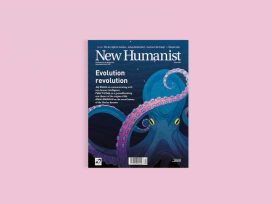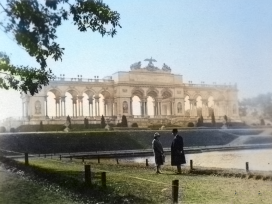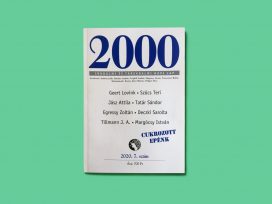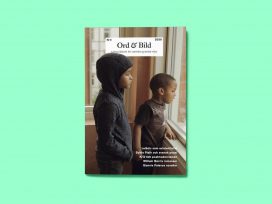The first issue of the feminist magazine Die Schwarze Botin (‘The Black Messenger’) appeared in Berlin in autumn 1976. From then until 1980, it was edited by Brigitte Classen, a historian, and Gabriele Goettle, a journalist and author. After a two-year pause, publication resumed under the editorship of Classen and the legal scholar Branka Wehowski in Berlin, the writer Elfriede Jelinek in Vienna, and the literary scholar and translator Marie-Simone Rollin in Paris. Marina Auder, an architect, took on the role of publisher and also financed the magazine from then onwards. Thirty-one issues were published in all, the last in 1987, each with a print run of between 3000 and 5000.
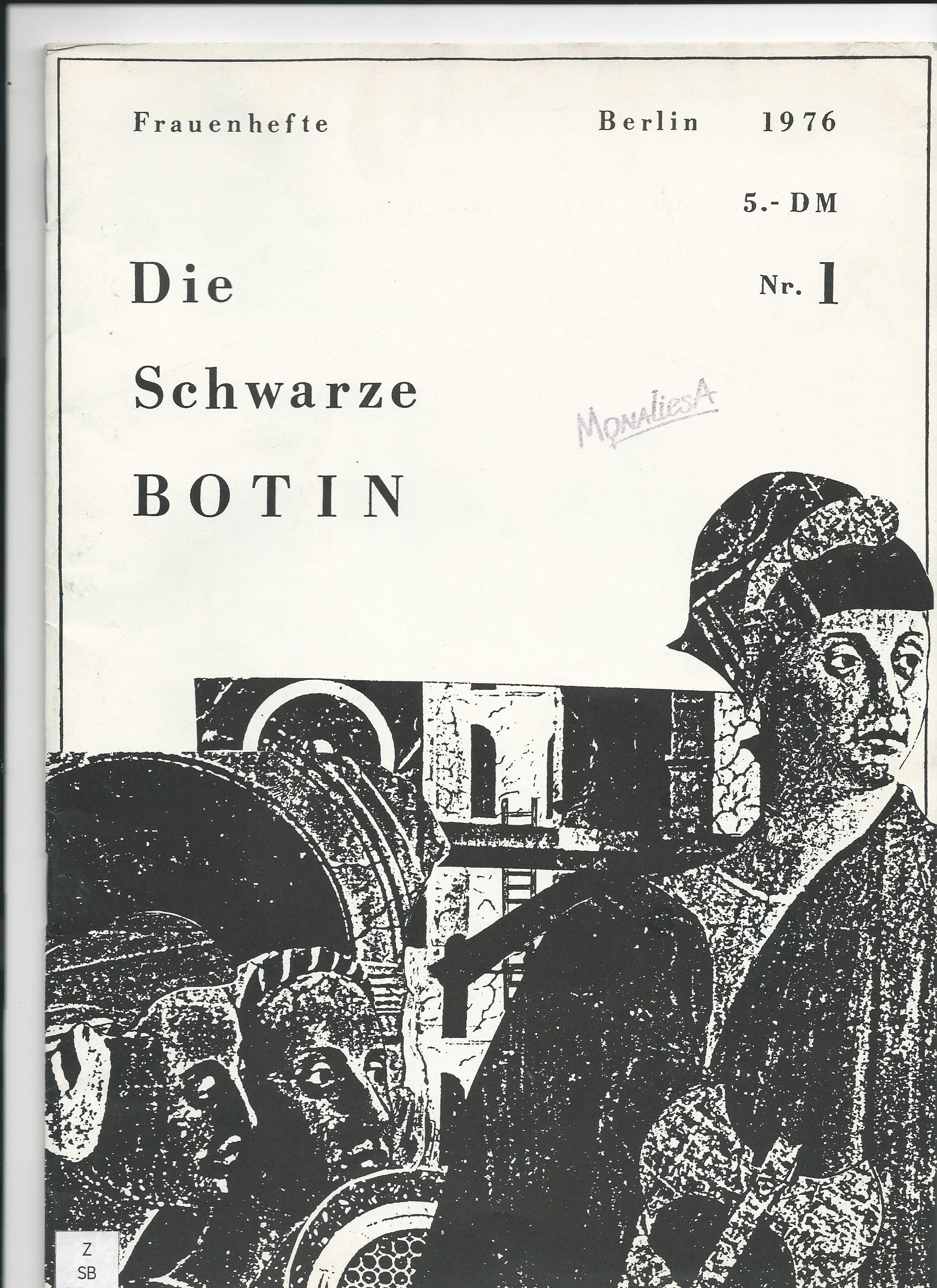
The Schwarze Botin featured academic texts, essays, literary pieces, poems and collages, as well as ironic and satirical comment. It didn’t fit neatly into any one category: it was neither an academic journal nor a purely literary magazine, nor could it be described as catering solely to the autonomous feminist scene. Unlike other magazines of the women’s movement, Schwarze Botin was less concerned with informing the alternative feminist milieu about what was going on in women’s centres, or about bringing feminist topics to a mainstream public. Rather, it saw itself as a site of theoretical reflection and exploration of aesthetic forms of expression. As a magazine, it was equally committed to giving space to different schools of thought as to contributions that refused to be constrained by academic disciplines.
The women’s movement in West Germany emerged from the dissolution of the Socialist German Student Union (SDS) in 1968/69, in the course of which two feminist groups were founded: the Aktionsrat zur Befreiung der Frau (Action Committee for the Liberation of Women) and the Frankfurter Weiberrat (Frankfurt Women’s Committee). In a speech at the SDS’s 23rd Conference of Delegates widely seen as marking the beginning of the West German women’s movement, Helke Sander, a founding member of the Action Committee, argued that the revolutionary claim of SDS would remain unfulfilled as long as male comrades were willing to acquiesce in women’s dependency. According to the Action Committee, gender relations were now the touchstone of revolutionary politics.
The break-up of the SDS freed up various leftwing groups to pursue their own, often very different goals and ideas. This diversification of the New Left brought a transformation of political language, theory and practice. Although 1968 had set off a process of cultural liberalization, the hoped-for social revolution had not taken place. The categories and concepts on which leftwing theory and practice had been based began to wobble. Maoist groups embarked on a course of re-traditionalization, raiding ‘the wardrobe of the labour movement’ to stage a political spectacle with matching rhetoric. Oblivious to wage earners’ increasingly diverse lifestyles, they cultivated and fetishized an image of the worker that had more to do with nostalgia for the Weimar Republic than the social reality of the 1970s.
Meanwhile, not a few leftwing intellectuals were coming to think that Marxism had lost its potential when it came to analysing contemporary social problems. This coincided with the beginning of the great class offensive from the top that would become known as ‘neoliberalism’. Those on the Left who would later be referred to as the ‘alternative movement’ turned their backs on theory entirely. After years of theorising, they began focussing on their individual needs and everyday lives, becoming ‘urban natives’ or retreating to rural communes. The social psychologist Peter Brückner concluded in 1978 that the ‘connection between theory and experience – including “leftwing” theory – has been broken’. Experience became a politically contentious field.
The sense of having no language, concepts or theory for expressing women’s experience as women was also prevalent in the autonomous wing of the women’s movement. At the beginning of the 1970s, mobilization against paragraph 218 of the criminal code prohibiting abortion brought together women’s groups, female trade unionists, and women from the SPD and from leftwing groups. At the same time, some women’s groups begun to organize themselves independently. Up until the mid-1970s, numerous women’s centres and women’s health centres, consciousness-raising groups and newspapers were founded that saw themselves as operating independently of New Left groups, political parties and trade unions. They became sites for a feminist public sphere, where a language was sought, experience shared, and concepts and theories developed and discussed. Three important supra-regional magazines of the autonomous women’s movement were founded in 1976/77 as organs of debate and communication, albeit with different goals: Courage, Emma and Die Schwarze Botin.
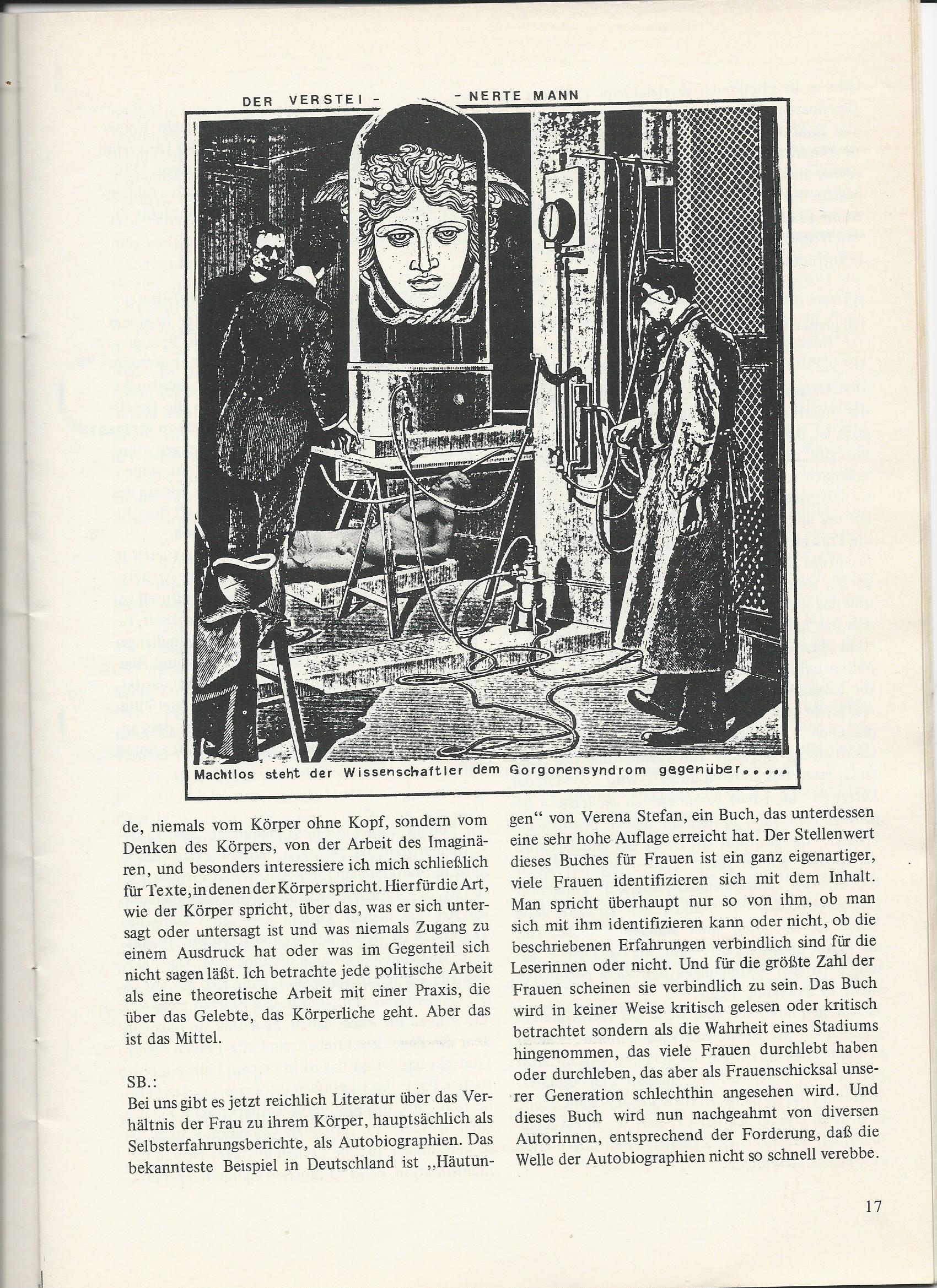
Critique and negativity
Like Courage and Emma, the Schwarze Botin saw itself as part of the autonomous women’s movement. However, unlike Alice Schwarzer’s Emma, it did not aim to intervene in the ‘male press’ and address ‘all women’. Neither did Schwarze Botin want to be a newspaper ‘in which women could talk to other women’, as the editors of Courage wrote in their second issue. Instead, Goettle announced in the foreword to the first issue of Schwarze Botin’s that the editors ‘believe that the magazine itself is more crucial to the existence of the schwarze Botin [sic] than those who read it’. Rather than being a simple medium of communication, it was supposed to challenge readers: ‘Those who think that the Schwarze Botin must be free of contradictions and, because it alienates reality, is short on proof and evidence, must strip away old categories of reading and thinking.’ The radical reworking of categories of thought and feminist critique as critique of ideology: this was the agenda to which the magazine attempted to remain true until its last double issue in 1987.
Schwarze Botin’s intention to be an organ of feminism that refused to shy from critique of feminism did not necessarily make it an unusual for its time. From the outset, the women’s movement did not balk from critiquing the ideas, theories and organizational initiatives from within its own ranks. What did make it stand out, however, was the magazine’s means and mode of critique: Schwarze Botin’s critique of ideology combined provocative satire with an insistence on negativity.
Broad sections of the autonomous women’s movement reacted to the split between experience and theory with practices of consciousness-raising. In consciousness-raising groups, women exchanged their experiences of friendship and relationships, of childhood and youth, of everyday life and work, as well as physical and sexual experiences, and analysed these collectively. The Schwarze Botin, however, rejected practices of consciousness-raising. In the first issue, Goettle wrote that:
The desire for consciousness-raising and self-affirmation increasingly conceals the self, women let thoughts come to them without thinking for themselves: the newly discovered senses (the new tenderness, individual corporeality, etc.) are supposed to take care of thought, but only take care of themselves. It is thus guaranteed that ‘new experiences’ cannot be had, or that old ones are merely repeated.
Certainly, the magazine also saw itself confronted with a lack of language and theory capable of expressing women’s experiences, one that hierarchical gender relations did not silence. However, authors such as Goettle and Elfriede Jelinek had a different understanding of experience and sought alternative solutions to those offered by consciousness-raising groups. They doubted whether talking about immediate personal experiences could lead to a grasp of the social dimension of women’s experience. In the magazine, experience was treated as a matter of expression and representation, and therefore as an aesthetic problem.
Jelinek did not believe that experience was immediate and could be instantly articulated and illustrated. The authors of the Schwarze Botin took it for granted that notions of authentic female experience were permeated by the norms and the values of androcentric society. They saw this society and its norms and values as nothing other than ‘unbounded exploitation and the culture of detritus’. They therefore distrusted any attempt to make direct experience an authentic point of departure for feminist theory and practice. The notion that society was defined by exploitation and the culture of detritus comes from a contribution to the second issue, published in 1977:
Everything in the way of culture and progress brought forth by the law-abiding citizen, with his orderly, moral way of life, made up of thrift, hard work, the performance of duty, reliability and the careful calculation of profit, is a ‘waste product’, and that is precisely what has legitimized him to this day. However, this beautiful harmony of unrestrained exploitation and culture of detritus has now very clearly proven itself to be the marriage between a blind person and a lame person, who lack nothing but the coup de grâce.
This gesture of total dissent indicates a feminist critique that creates nothing, is unable to find ‘elements for forming a new society and the forces tending towards the overthrow of the old one’ (Marx), but takes as its premise society’s ‘web of delusion’ (Adorno’s Verblendungszusammenhang) and the notion of ‘total socialization’. In the feminist critique of Schwarze Botin, unbroken trust in a feminist subject was impossible. This attitude resulted in the negativity that characterized the magazine’s critique of ideology.
The nineteenth issue, which appeared shortly after the magazine’s revival in 1983, carried a conversation between Brigitte Classen and the journalist Uta Ruge about the previous fifteen years of the autonomous women’s movement. Classen enumerates the issues that the movement had failed to discuss or critique. Instead of seeking an encounter with one’s ‘own destruction’ and reflecting on the violence of the factual, it had imposed the positivity of identity models and created a climate of anti-intellectualism. The addiction of the women’s movement ‘to wanting to be positive’, Classen went on, had resulted in a ‘missed opportunity to be negative’. Classen and Ruge were distinct among feminists for focussing their analysis on ‘the violence of positivity’ that they discerned in social conditions. They demanded that the women’s movement refuse to integrate with society.
For the sake of critique, the two authors hyperbolized the tendencies in the autonomous women’s movement that they saw as nothing but affirmation and repetition. They saw the emphasis on sensuality in consciousness-raising groups as one-sided affirmation of a characteristic already permitted to women in bourgeois society – at the cost of the denial of their intellects. The anti-intellectualism that Classen and Ruge criticized appeared to correspond perfectly with the social construction of feminine subjectivity. The Schwarze Botin was not the only one criticizing feminism’s fixation with identity, its anti-intellectualism and the dead-ends of first person politics. Pioneering critiques of ‘images of femininity’ (Sigrid Weigel), of ‘imagined femininity’ (Silvia Bovenschen), and of ‘the antipathy to theorizing’ in certain sections of the women’s movement (Hilge Landweer) were also developed outside the magazine.
The response of the Schwarze Botin to the separation of theory and experience was to explore the use of negativity as both attitude towards the world and as theoretical code. Negativity was the meeting point of two currents of thought in the Schwarze Botin. The magazine is a document of the moment when poststructuralism entered the West German discussion and combine with critical theory. In her conversation with Uta Ruge, Classen referred to Theodor W. Adorno, adopting his style of thinking in aporias.
Despite their view of society as being imbued with violence and unrestrained exploitation, in which establishing a positive point of departure for feminist theory and critique and a feminist subject was problematic, Schwarze Botin’s authors still believed in female subjectification and of individuation, along with the possibility of change. This is the aporia of this kind of feminist thought: despite believing that individuality being impossible in a society and a culture where individuality and freedom exists only in its mangled male form, female individuality was energetically demanded.
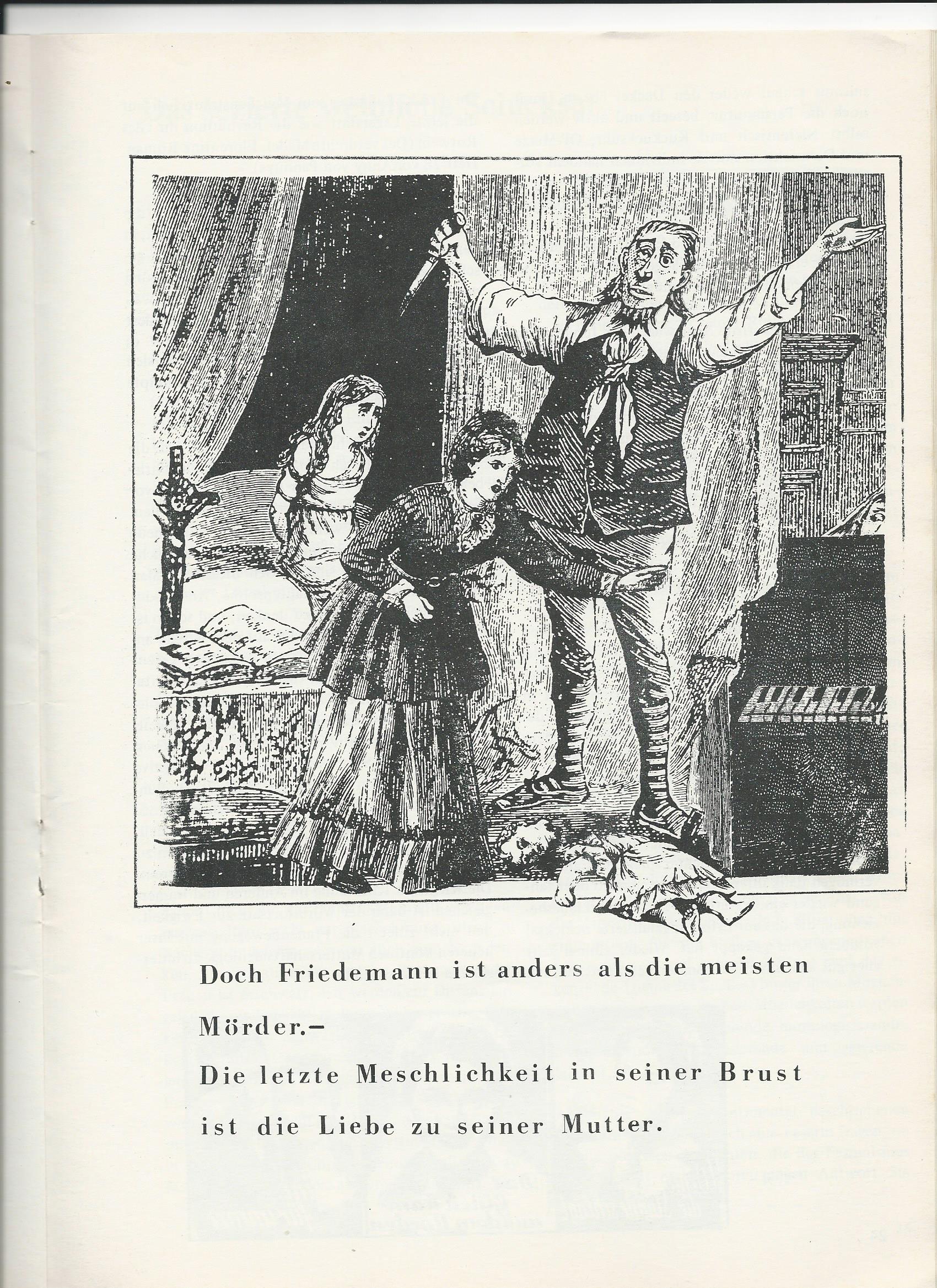
Theory, literature and satire
The motto ‘good theory is always literary’, with which Branka Wehowski prefaced an article in issue 25 in 1984, was programmatic. The authors subverted the academic distinction between literature and theory. The magazine format allowed genres to be mixed and transgressed in order overcome ‘old categories of reading and thinking’. Further, the journal functioned as a site for the reception of various currents of thought and, at the same time, as a field of experimentation for the production of meaning and sense.
In their theoretical reflections on the production of meaning, writers such as Rita Bischof, Annette Runte, Sybille Klefinghaus and Eva Meyer received the deconstructionism of French authors like Luce Irigaray, Julia Kristeva and Hélène Cixous. Interviews and translations of their texts also appeared in the Schwarze Botin. Meyer, in particular, attempted an independent elaboration of deconstruction. She was interested in how meanings could be made less clear and thus multiplied. Behind her analysis lay the perception that the social production of meaning and knowledge followed a logic that excluded alternative and new meaning and knowledge. Indeed, it seemed that the alternative and the new could not emerge in the first place, be it through positively redefining knowledge or simply negating it. Both approaches continued to be based in the prevailing fabric of meaning and existing order of knowledge. Meyer sought redress in a negativity understood as an operation whereby meaning was blurred so as to break through the dominant order of knowledge.
There were also, however, contributors who rejected poststructuralist thought. In 1985, Elisabeth Lenk published a furious commentary on Luce Irigaray, entitled ‘Rosa Wolke’ (Pink cloud). Lenk charged Irigaray with having renounced her theoretical thinking and of proclaiming mere belief. For Lenk, the attempt to find new meaning had slid into sentimental spirituality and was ripe for satire.
‘French theory’ was in the air during the mid-1970s. In 1976, the year of the Schwarze Botin’s first issue, the publishing house Merve published texts by Irigaray, while the magazine alternative published an issue with texts by Irigaray, Hélène Cixous and Julia Kristeva. The discussion of these thinkers in the Schwarze Botin coincided with contemporary trends. However, right up until the last issue, the tension can be felt between deconstruction on one hand and critical theory on the other.
While Meyer tried to grasp in theoretical terms how meanings multiply, authors also experimented with such issues in through literary means. Elfriede Jelinek, Heidi Pataki, Elfriede Gerstl and Ginka Steinwachs all sought to expose the reified language of male discourse through parody, mimicry and fragmentation, to an degree unmatched in almost any other feminist magazine at the time. See, for example, Elfriede Jelinek’s critique the relation of bourgeois capitalism to nature:
Such people always have to talk about nature and how we’ve lost it once and for all because nature belongs to them and no one likes to lose a piece of property … Their servants, the artists and artistic directors and hairdressers and boutique owners (their mistresses), they sit comfortably in nature and gaze out of their little bodies into the great unknown and up towards the great unknown, thousands of hectares of which belong to them … Artists, by the way: who can look at nature so fondly as someone who has nothing better to do or someone to whom it belongs?
Through hyperbole, Jelinek denaturalizes ideas about nature and reveals the destructive relations that humans have with one another and with nature. Ginka Steinwachs also focuses on the social relation to nature and the separation of sensuality and reason in culture and the arts. In one piece, entitled ‘gum theatre of the mouth’, words become tangible as the carriers of meaning; free association, alliteration, rhythm and rhyme draw attention to the joy of sensuous nonsense. The unconstrained expansion of sensual perception and reality was what this kind of feminist literature aimed at. Authors had little or no interest in reducing aesthetic issues to the question of the politically correct representation of marginalized identities, subjects or groups in films, novels and dramas.
The laughter that the Schwarze Botin’s satire provoked was different from what Philipp Felsch describes as the ‘waste product of ideology critique’ that has stamped its mark on postmodernity. This may be because, by all accounts, the Schwarze Botin took its own satire seriously. Gabriele Goettle announced in the first issue that the magazine saw itself as a satirist that treats her subject matter uncompromisingly and that expects her readers ‘to get serious’. Satire was a method of critiquing ways of thought. Behind the bitter laughter that reading a Jelinek text may prompt, there is the serious intention to show social violence in all its ugliness. In cheerful laughter that reading a Steinwachs may prompt, there is the ‘utopia of the word become flesh’: the attempt to reconcile reason and sensuality. For the Schwarze Botin, satire was a means of ideology critique.
The Schwarze Botin carried excerpts from published works as well as to previews of yet unpublished ones. If this brought authors renown while the magazine was still being published, since it was discontinued the Schwarze Botin has come to be known for the authors appeared in it. The scepticism with which ‘third wave’ feminists of the 1990s regarded the women’s movement of the 1970s and 1980s did not enhance the reception of difficult feminist magazines. But attitudes have slowly begun to change. Barbara Ehnes’s staging of an editorial meeting in Vienna in 2013 brought Schwarze Botin authors together with younger generation feminists. Out of the performance, Ehnes developed an installation displayed at the Württembergischer Kunstverein in Stuttgart in 2013/14. References are also made to the magazine in the feminist journal outside the box, which has been published since 2009.
As a child of its time, the Schwarze Botin insisted on feminist cultural and social criticism, using aesthetic means to brilliant effect. Subsequent developments in the autonomous women’s movement have shown that a feminism limited to cultural criticism risks losing sight of the economic development of society. However, if one understands the kind of feminist thought for which the Schwarze Botin stood as one moment in feminism, then it reveals its witty charm and intellectual attraction.
This article is part of a series on the history of cultural journals curated by the Working Group on Periodical Studies in collaboration with the Eurozine journals network.







